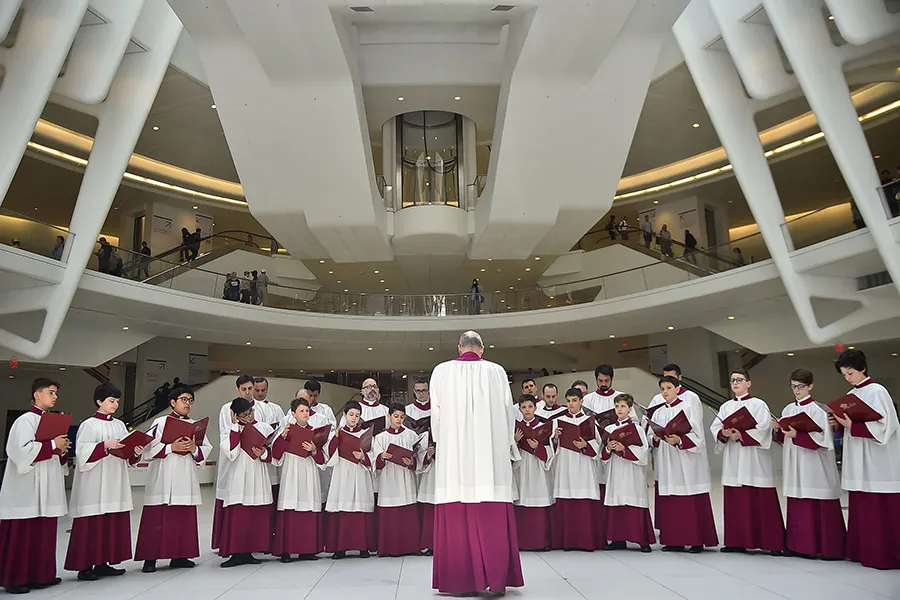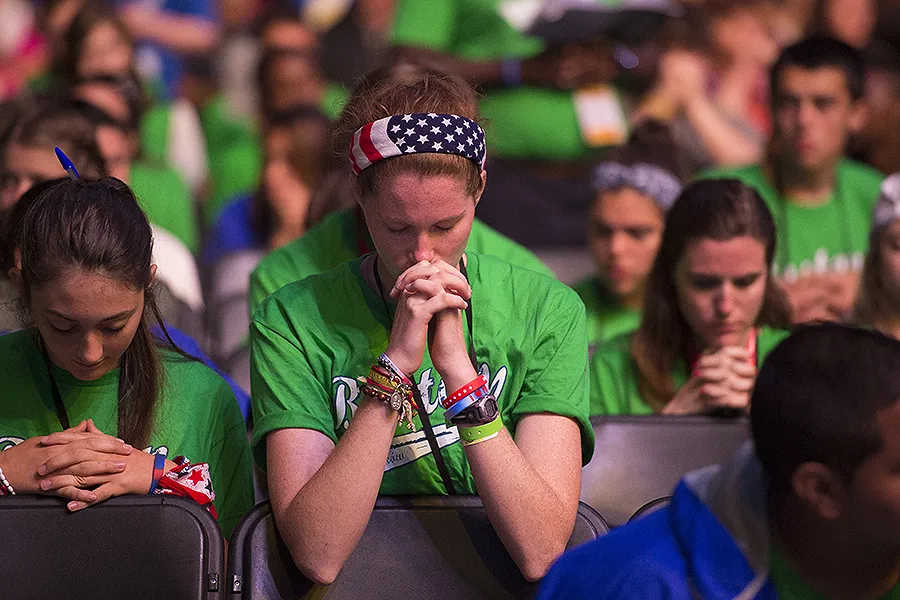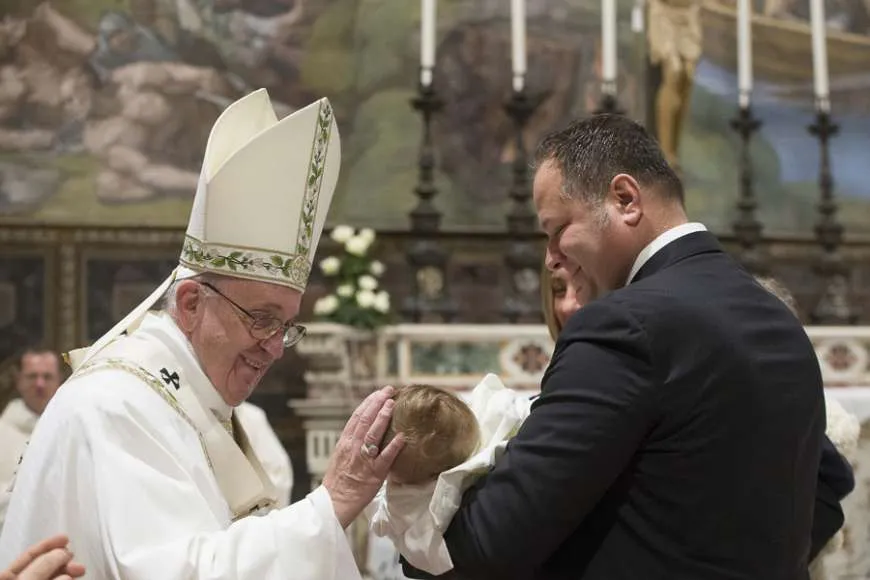
New York City, N.Y., May 9, 2018 / 05:07 pm (CNA).- The papal pomp and Catholic circumstance on display at this year’s Met Gala in New York (aka the ‘Oscars of the East Coast’) was met with a combination of confusion and optimism from Catholic thinkers and writers.
The theme for this year’s annual gala, “Heavenly Bodies: Fashion and the Catholic Imagination”, inspired equally creative and controversial attire, including the bedazzled, skin-bearing papal ensemble worn by Rihanna, a pregnant Cardi B dressed up as Mary Queen of Heaven, and a Sistine chapel-inspired dress worn by Ariana Grande, among many other outfits emblazoned with crosses and icons and other Catholic-inspired paraphernalia.
The event kicked off the Met exhibit with the same theme, which features Church garments borrowed from the Vatican, religious art from the Met collection, and 150 designer fashion pieces that were intended to pay homage to Catholicism.
Considered by some to be a perverse and often baffling event, many Catholic writers seemed reluctant to dub the gala as either completely sacreligious or as a stroke of New-Evangelization genius – most fell somewhere in the middle.
Ross Douthat, a Catholic columnist at the New York Times, called the gala a “beautiful and blasphemous spectacle” and noted that “When a living faith gets treated like a museum piece, it’s hard for its adherents to know whether to treat the moment as an opportunity for outreach or for outrage.”
While he lamented the lack of faith behind the fascination with Catholicism, Douthat did wonder whether there was a lesson for the present-day Church contained in the secular world’s enamoration with the trimmings and trappings of an older Catholic aesthetic – one that he said has largely taken a back seat in the Church since the Second Vatican Council.
“The path forward for the Catholic Church in the modern world is extraordinarily uncertain,” Douthat wrote. “But there is no plausible path that does not involve more of what was displayed and appropriated and blasphemed against in New York City Monday night, more of what once made Catholicism both great and weird, and could yet make it both again.”
Also lamenting the lack of real faith behind the display was Matthew Schmitz of First Things, who said that people should pay attention to the real Catholic imagination and the meaning behind it, and not the overly sentimental and shallow aesthetic Catholicism that was on display at the gala.
“The same faith that gave rise to these beautiful baubles proposed views on sexuality and social order that are contrary to the spirit of the age. It is foolish to suppose that either the Church’s teaching or its relics are mere artefacts that now have lost their power,” he said.
“These beautiful copes, stoles, clasps, and rings still move men—still have the power Leo XIII acknowledged in Testem Benevolentiae when he advised priests in America to spread the faith ‘by the pomp and splendor of ceremonies’ as well as ‘by setting forth that sound form of doctrine.’ In the Met’s carnival atmosphere, their splendor seems all the more radiant.”
Some writers noted that the gala also revealed a double standard of what is acceptable to culturally appropriated, following an uproar last week over a Utah teen who wore a Chinese dress to her high school prom even though she was not Chinese herself.
Daniella Greenbaum, writing for Business Insider, said that while she finds the whole concept of cultural appropriation “deeply misguided,” she did think that the Met revealed a double standard over what qualifies as offensive, given the outrage over the Chinese dress and the lack thereof over the Catholic costumes at the gala.
“It highlights the unfairness. Social-justice warriors inevitably create distinctions — they have appointed themselves the arbiters of which cultures deserve protecting. And in the meantime, it seems, they’ve left Catholics out to dry,” she wrote.
However, others saw the cultural appropriation as a neutral or even positive part of the event, creating opportunities for further conversation.
Madeleine Kearns, writing for The Spectator, a UK publication, said that Catholics ‘can cope’ with cultural appropriation, and that being offended by it is a “counter-productive, ideological dead-end; a festival of victim culture. As far as I’m concerned, if people want to dress up as the Pope, or drape rosary beads over their car mirrors — why ever not? It starts a conversation about a culture I’m proud of.”
Eloise Blondiau, writing for America magazine, said that “If nothing else, the theme of this year’s exhibition and gala shows a willingness to engage with religion that is healthy and promising in a climate where polarization is rife.”
While the event was organized in cooperation with the Vatican, Cardinal Timothy Dolan of New York was one of a few prelates in attendance, joking later that he ordered in “street meat” – hot dogs from to a pushcart – to the posh event after finding the refreshments insufficient, and joking that Rihanna borrowed her miter from him.
The cardinal, who some criticized for attending the event, said in a press conference for the opening of the exhibition that he came because the ‘Catholic imagination’ honors “the true, the good, the beautiful.”
In the ‘Catholic imagination,’ the True, the Good, and the Beautiful have a name: Jesus Christ, who revealed Himself as ‘the Way, the Truth, and the Life,’” he said. “In the ‘Catholic imagination,’ the truth, goodness, and beauty of God is reflected all over… even in fashion. The world is shot through with His glory,” he said, adding a thanks to the organizers of the event, as well as to the Vatican “for its historic cooperation.”
Dolan later told SiriusXM’s The Catholic Channel that as a self-proclaimed “JCPenney’s Big and Tall man” his personal interest in the event was not for the fashion, but for the chance to engage with people about the Catholic faith.
“There were some aspects that looked like kind of a masquerade party, a Halloween party,” he said. “I didn’t really see anything sacrilegious, I may have seen some things in poor taste, but I didn’t detect anybody out to offend the church.”
However, “A number of people came up and spoke about their Catholic upbringing and things they remembered and it was a powerful evening.”
The exhibition itself will run May 10 – Oct. 8, 2018 and is hosted at the Anna Wintour Costume Center, the medieval rooms at the Met on Fifth Avenue, and the Met Cloisters in uptown New York City. It is the Met Costume Institute’s largest show to date.
Church garments and liturgical vestments, many of which are still in use, will be displayed separately from the fashion exhibit, out of respect. The items in the separate exhibit come from the Sistine Chapel sacristy’s Office for the Liturgical Celebrations of the Supreme Pontiff and range in age from the mid-1700s to the pontificate of Saint John Paul II.
 […]
[…]






